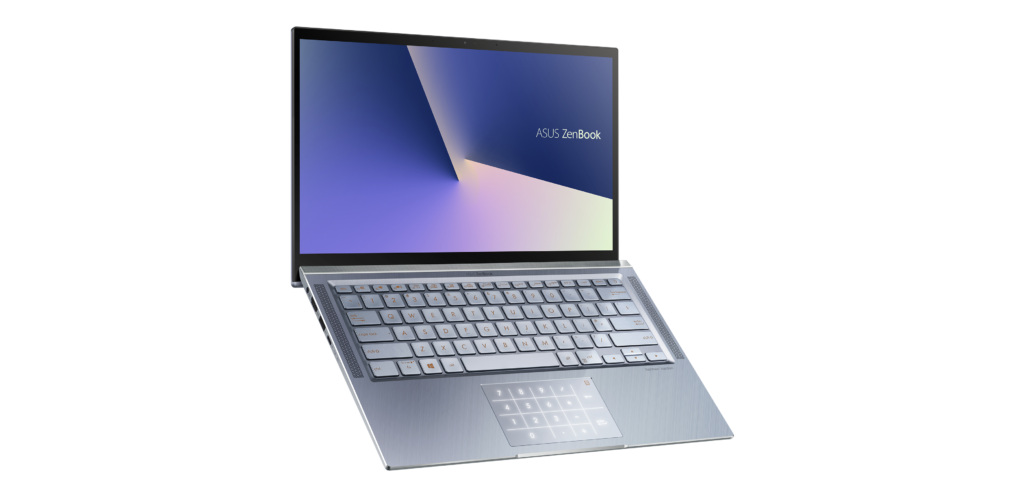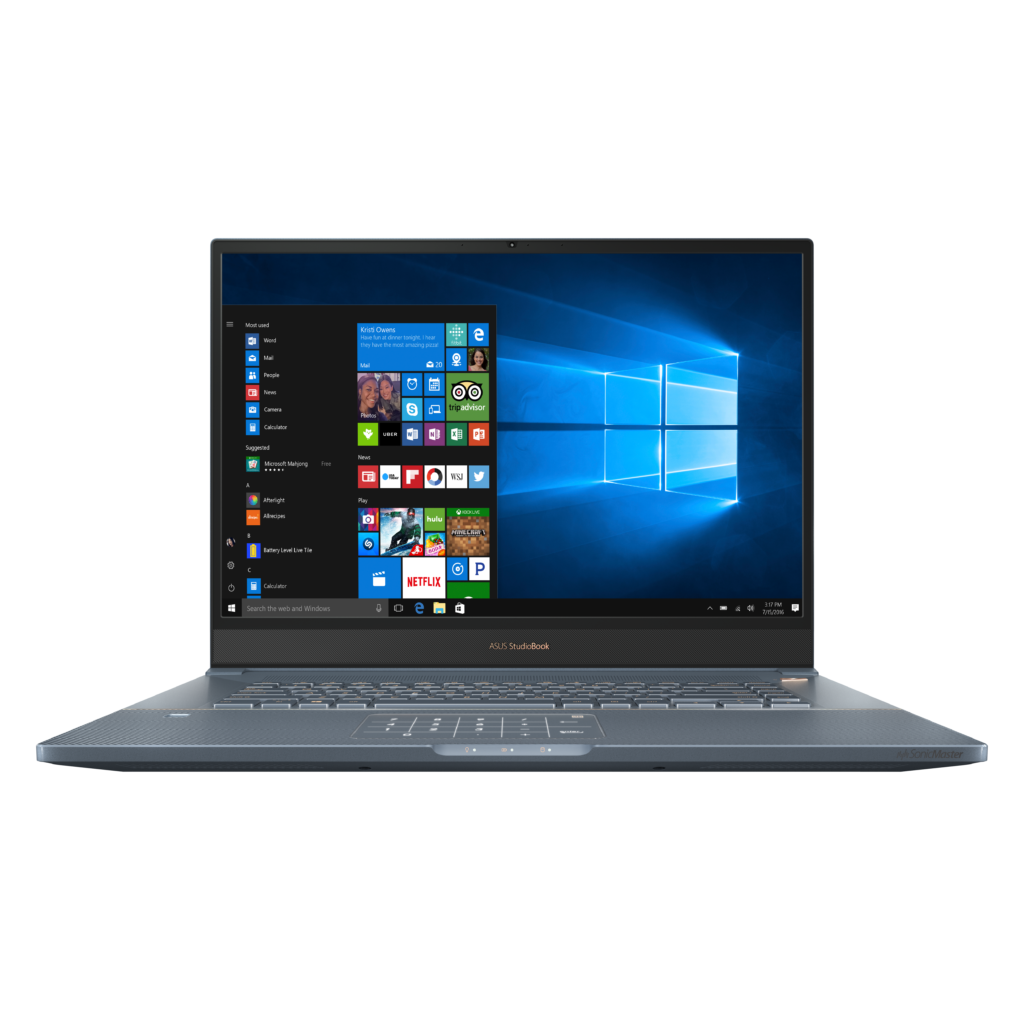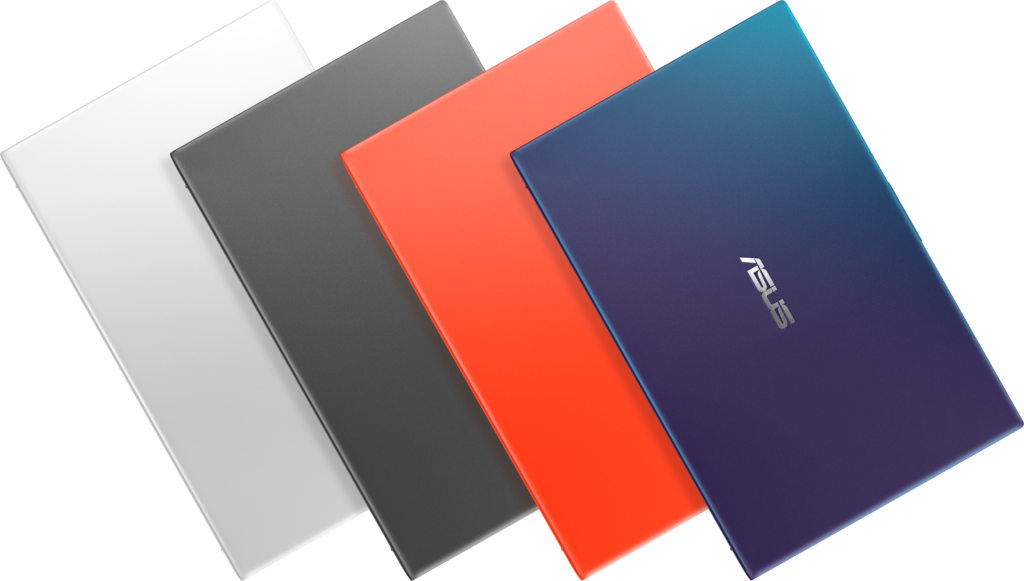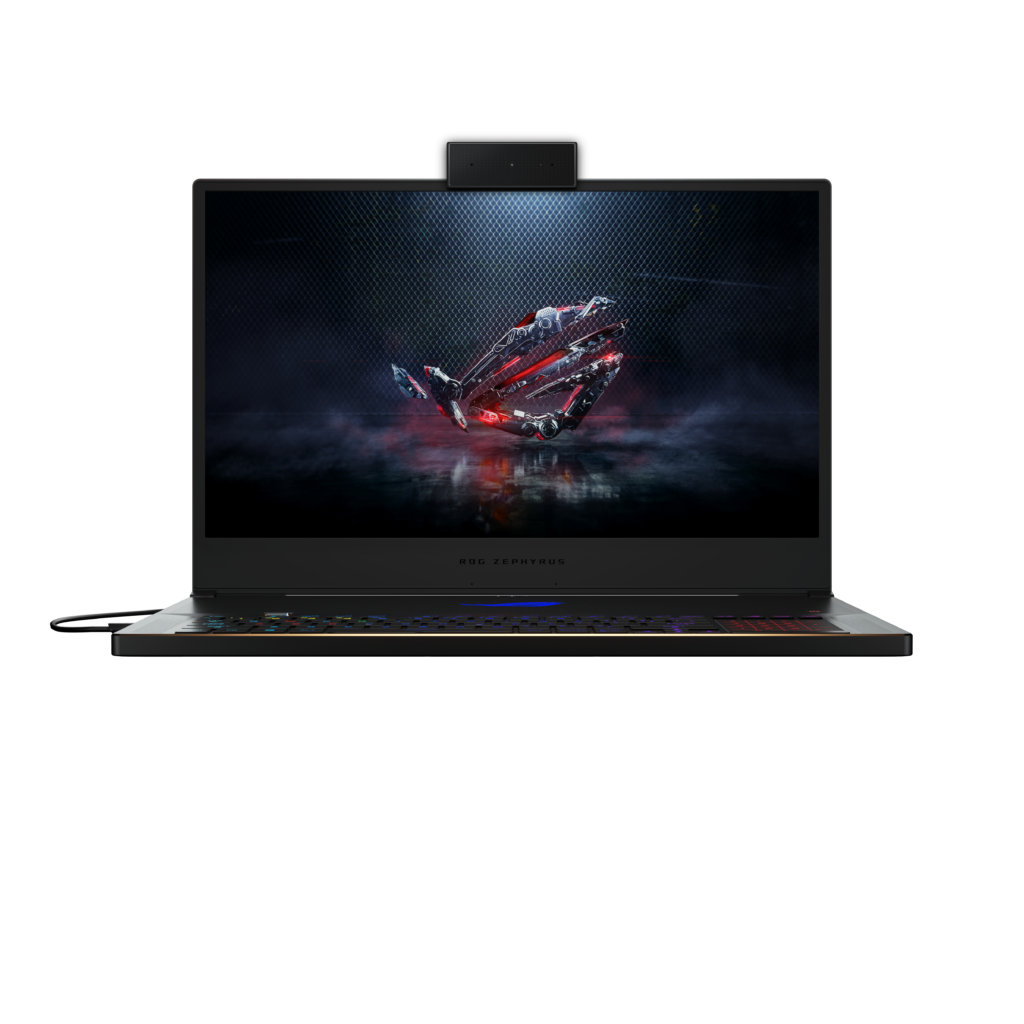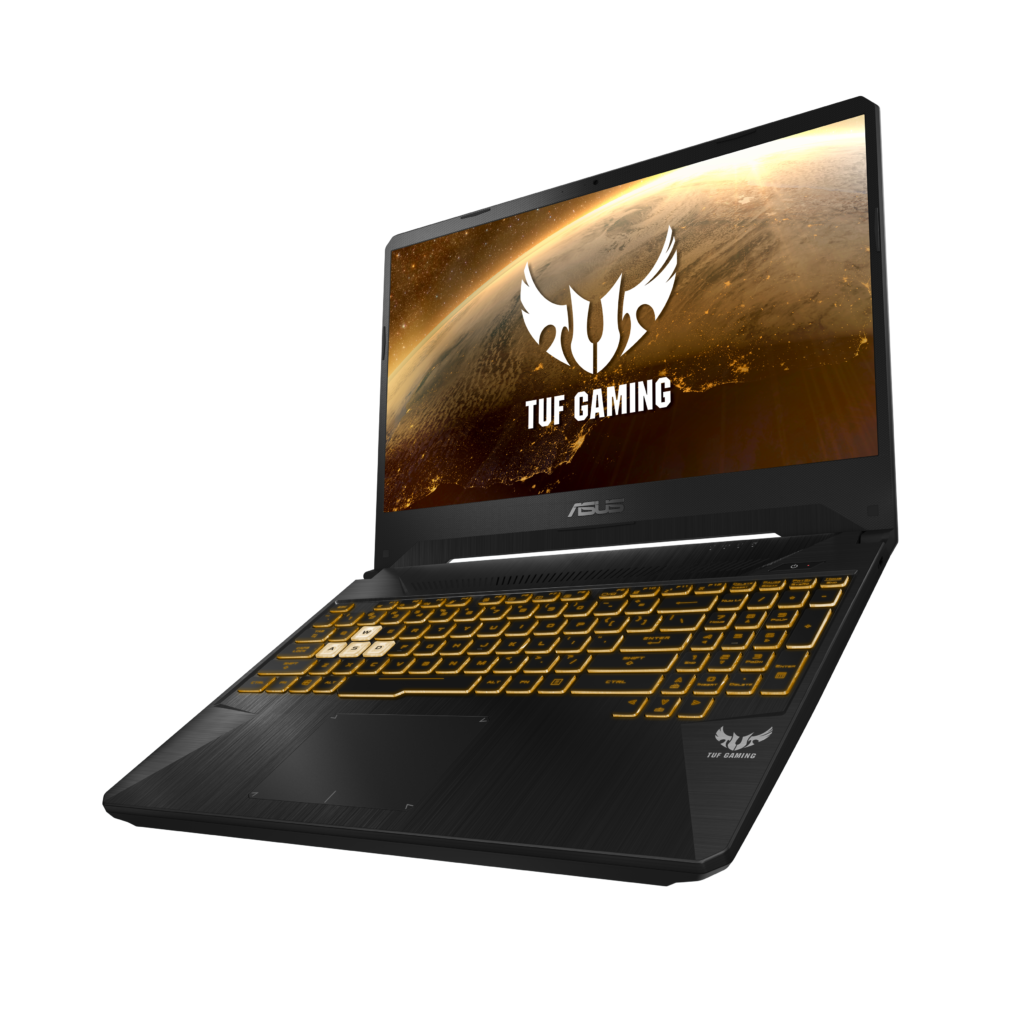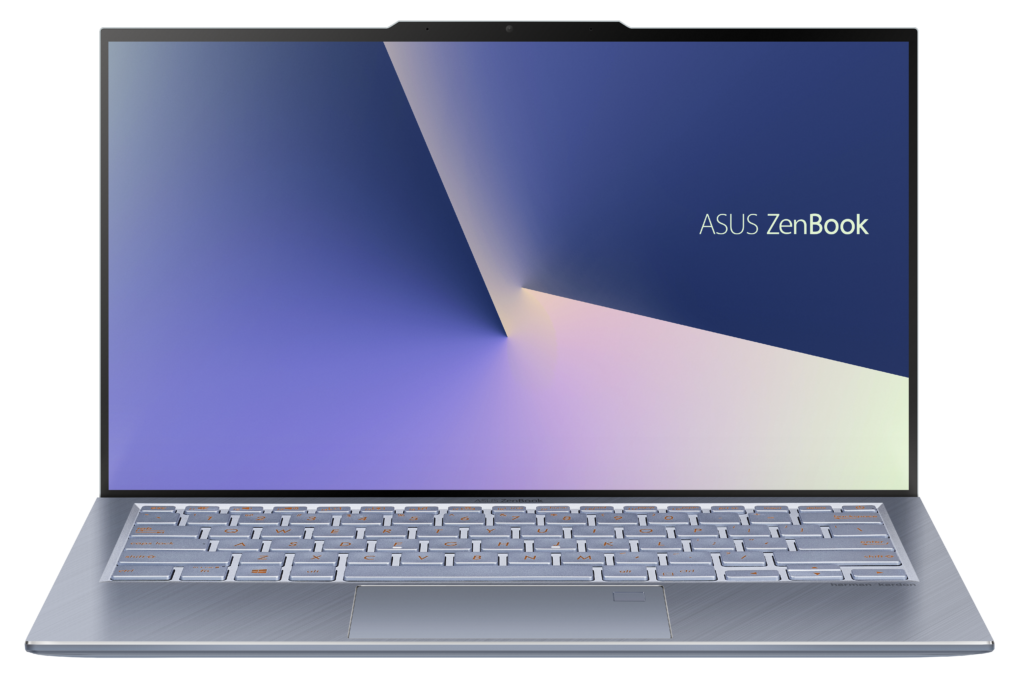
At CES 2019, ASUS unveils new ZenBooks, StudioBook, 3 additions to the VivoBook family and gaming laptops
At CES 2019, ASUS unveiled two new ZenBooks, a StudioBook and three additions to the VivoBook family – as well as the latest from the Republic of Gamers and TUF lines.
The ZenBook S13 (UX392) is an ultrabook that combines powerful performance and portability in a small chassis. The 13.9-inch Full HD display is surrounded by ASUS’ most impressive NanoEdge display to date – an ultra-thin 4-sided bezel, providing the industry’s biggest screen-to-body ratio at 97 percent. The thinnest laptop at 12.9 mm with discrete graphics (provided by the NVIDIA GeForce MX150) and the latest quad-core processor, the Intel Core i7 Whiskey Lake CPU, the ZenBook S13 pushes the boundaries for what’s possible inside a 13-inch laptop. It can deftly tackle video encoding; or aggressive multitasking, like processing photos while switching between productivity apps, emails and web browsing. There’s ample space with 1 TB of PCIe x4 storage, and the 50Wh battery is enough to last a full day. While everything inside is packed in tightly, nothing about it feels cramped. The backlit keyboard spans almost the full width of the laptop. Underneath is a roomy trackpad with an integrated fingerprint sensor that makes for quick and convenient login via Windows Hello.
Squeezing more components into the same package as the first ZenBook S13 required a bit of ingenuity from ASUS’ engineering team, which also succeeded in meeting the military-grade MIL-STD-810G durability standard. To ensure no space was wasted, the metal chassis is CNC-milled from a block of aluminum, allowing the lid to be carved out, complete with the complex cuts surrounding the keyboard, without creating any unnecessary gaps.
The ZenBook 14 (UX431) balances value and performance to deliver a sleek, more-affordable ultrabook that doesn’t compromise on power. Lifting the lid reveals a 14-inch glass panel with a full HD 1920×1080 resolution. This premium design unit is packed full of the latest technology, including Intel 8th Generation Core processors, NVIDIA GeForce MX150 graphics and the latest connectivity options. These days, 8 GB of system memory is a common luxury for mobile multi-tasking, but the UX431 is available with up to 16 GB of RAM to ensure seamless switching between tasks. On top of that, up to 1 TB of PCIe-attached solid-state storage gives you a powerful combination of low latency and high capacity. You’ll have a hard time filling such a spacious drive, and everything you install will launch lightning fast.
When you want to concentrate on the task at hand or just need a boost from some music while you work, you can do it with the ZenBook 14’s four speakers. In addition to the pair of upward firing speakers flanking the keyboard, there are two more speakers on the underside of the laptop, and any muffling from the desk is reduced thanks to the ErgoLift hinge. Powered by a Smart Amplifier, the Harmon Kardon-certified setup employs advanced signal processing to deliver wide frequency response, powerful bass, and especially crisp sound. When the ZenBook 14 becomes available, it’ll start at $749.
Both the ZenBook 14 and ZenBook S13 come in Utopia Blue.
Consumers will also see the debut of the ASUS StudioBook S (W700), a new breed of workstation to support the demands of the modern content creator. Built based on feedback directly from industry professionals, StudioBook S packs a 17-inch display into a compact 15-inch body, and weighs in at just five pounds. With an Intel Xeon processor and NVIDIA Quadro P3200 graphics, it’s capable of handling a variety of complex workloads while balancing day-to-day tasks.
The bezels on either side measure just 5.3 mm, resulting in a truly expansive display that feels more like a desktop monitor. The panel itself covers 97 percent of the DCI-P3 color space, which is much wider than the sRGB color gamut used by typical PCs, so it’s capable of displaying a broader range of colors. It’s Pantone Validated to ensure the colors seen on the screen are accurate, too. Each panel is factory-calibrated to delta E < 2 before it ships out, which matches the spec for ASUS’ ProArt monitors and actually exceeds the Pantone requirement. Wide 178-degree viewing angles ensure colors stay vivid and bright, and the 180-degree hinge enables a wider range of positions for the display, which can be useful when showing work to clients and collaborating on projects with coworkers.
ASUS also introduced the world to the 14-inch VivoBook 14 (X412) and the 15.6-inch VivoBook 15 (X512).
All the new models feature frameless NanoEdge displays with at least an up to 88 percent screen-to-body ratio for immersive viewing. The slim bezel allows a large display to fit into a smaller chassis, effectively reducing the laptop footprint for a more compact and portable machine. These laptops are powered by up to an 8th Generation Intel Core i7 processor with up to NVIDIA GeForce MX130 discrete graphics, and include the ErgoLift hinge that tilts the keyboard to replicate the feel of a desktop keyboard for a more comfortable typing experience.
The VivoBooks also support Intel Optane memory, which intelligently accelerates hard disk performance, speeds up multitasking and app-loading times, and reduces boot-up and resume times.
In addition, dual-band 802.11ac Wi-Fi connections provide speeds of up to 867Mbps — six times faster [1] than 802.11n — for seamless video-streaming, and smooth web-surfing. VivoBook also features Bluetooth 4.2.
VivoBook 14 and VivoBook 15 are available in different finishes to suit your style. Transparent Silver provides a sleek and sophisticated look, or go for Slate Grey for a more understated approach. Set the trend with the uniquely iridescent Peacock Blue: a unique option that changes color when you look at it from different angles. If you really want to stand out, there’s Coral Crush with its bright finish.
The new VivoBook 14 features the new NumberPad — a novel solution to the lack of a dedicated numeric keypad on small laptops. In normal use, NumberPad is a large glass-covered Windows Precision Touchpad with multi-gesture support. A tap of the NumberPad icon on the touchpad turns it into an LED-illuminated keypad with a familiar layout for easy data entry.
An optional fingerprint sensor built into the touchpad provides one-touch access with Windows Hello, so logging in has never been easier or more secure. There’s also a full-size backlit keyboard that’s perfect for working in dim environments.
But that’s not all – ASUS also revealed several gaming updates at CES.
ASUS Republic of Gamers (ROG) announced the latest additions to the ROG arsenal of the world’s best gaming gear, including the all-new, ultra-versatile ROG Mothership (GZ700), a 17.3-inch Full HD detachable gaming laptop equipped with up to a factory-overclocked Intel Core i9 processor and NVIDIA GeForce RTX 2080 graphics card; and the ROG Zephyrus S (GX701) below, the world’s slimmest gaming laptop with an up to 8th Gen Intel Core processor and NVIDIA GeForce RTX 2080 with Max-Q Design graphics.
ROG has reimagined the form factor of gaming laptops with ROG Mothership, moving from a design that traditionally sits flat to one that stands tall to draw more air into its advanced cooling system. Its keyboard detaches and folds to fit different scenarios, giving you the freedom to find the perfect position. The innovative design also leaves enough room to put all the speakers right below the screen.
Other products on display at the ROG Media Showroom include a lineup of refreshed Windows 10 gaming laptops — Zephyrus S (GX531GX/GW/GV), SCAR II, Hero II, G703 and GX701 — that now come equipped with NVIDIA GeForce 20 series graphics cards [2]. The ROG Huracan G21CX has also been upgraded with a new CPU and GPU to improve its power and outperform the competition.
Gaming can be an expensive hobby, but you don’t need to drop thousands of dollars on a laptop to play your favorite titles. With the right mix of components, affordable gaming laptops – such as ASUS’ new TUF Gaming FX505DY and TUF Gaming FX705DY laptops – can add up to more than the sum of their parts.
AMD’s Ryzen processors have taken desktops by storm and TUF Gaming laptops lead the deployment of the newest version. Otherwise known as Picasso, this 2nd Gen Ryzen Mobile APU is built with industry-leading 12nm technology. The Ryzen 5 3550H chip powering the FX505DY and FX705DY boasts four cores and eight threads that deliver capable performance for popular games and everyday work. Multithreaded performance is particularly strong, yet the processor fits into a 35W power envelope that doesn’t compromise battery life.
The TUF Gaming AMD Editions pair Picasso with up to 32GB of RAM, so they’re primed for productive multitasking and light content creation. A range of storage options makes it easy to tailor to your needs and budget, though every configuration mixes faster solid state storage with a higher-capacity hard drive to offer speed where you need it, alongside plenty of room for larger game libraries.
Slim bezels frame the NanoEdge screens to further enhance immersion and shrink the overall footprint, while reinforced bodies help the machines survive daily wear and tear. Intelligently specced and carefully built, these AMD Editions balance performance and affordability to provide a better experience in your favorite games.
Find out more about all these releases at ASUS and the introduction page for the new ROG product line.
[1] 5.78 times increase for 867Mbps (2×2 802.11ac) versus 150Mbps (1×1 802.11n). Unless otherwise stated, Wi-Fi performance figures are based on theoretical performance. Actual performance may vary in real-world situations.
[2] Specific GPU varies among ROG laptop models. Please consult individual product page for more information.
The post At CES 2019, ASUS unveils new ZenBooks, StudioBook, 3 additions to the VivoBook family and gaming laptops appeared first on Windows Blog.
Source: Windows Blog
—

